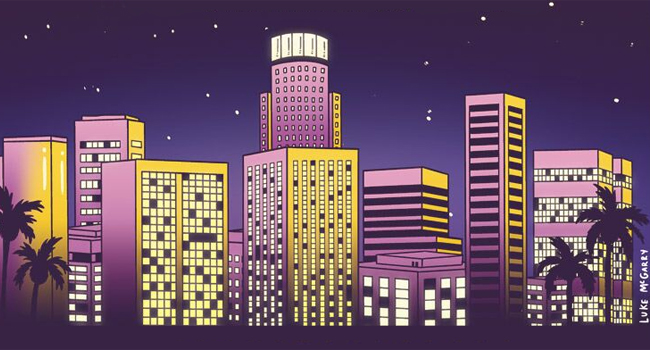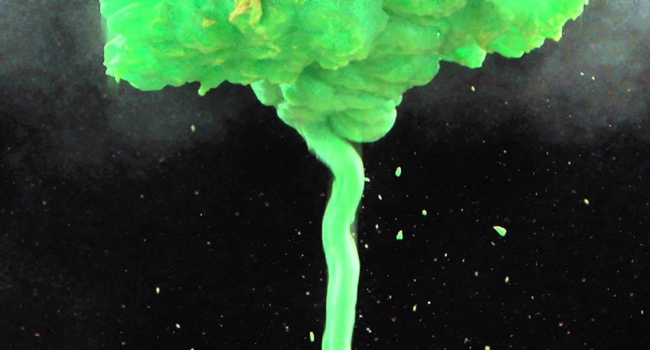40. Dirty Projectors – Bitte Orca (2009):
Combining math rock elements with haunting pop sounds like a recipe for disaster. Somehow, Dirty Projectors manage to pull off their bizarre genre-blending experiment rather elegantly. Heavily syncopated guitar riffs crash into full string quartets while not one, not two, but three vocalists harmonize over it all. It’s daring, it’s bold, it’s fresh and it’s incredibly unique, all while still maintaining a good amount of pop sensibility. Bitte Orca can be frantic or it can be relaxing, it can be heavy or it can be light, but it’s always excellent. –Charlie Woodman
39. Bright Eyes – I’m Wide Awake, It’s Morning (2005):

No one is equipped for their 20s without a copy of I’m Wide Awake, It’s Morning. Conor Oberst aka Bright Eyes created a timeless coming-of-age folk album that reaches every corner of youth angst—love, break-ups, drugs, alcohol, politics, religion, etc. Never shy about expressing his political and social commentary, Oberst’s quivery, nervous voice rides the lyrics like a roller coaster—ups, down and unexpected turns. The songwriting on I’m Wide Awake It’s Morning, seems to have come directly from the pages of Oberst’s diary. They’re so raw, unabashed, candid, and, honestly, relatable. –Alex Peak
38. Taking Back Sunday – Tell All Your Friends (2002):

Taking Back Sunday may have defined an entire scene and way of living within that scene with Tell All Your Friends. Everyone listening to emo circa early 2000s was either on the side of Brand New or Taking Back Sunday in the ongoing feud between Jessey Lacey and Adam Lazzara. This fight brought a Beatles vs. Stones sort of feel to a small niche that was overlooked and looked down upon by those who didn’t understand it. Tell All Your Friends was one of the last great true emo records, capturing teenage angst as tastefully as it can be captured. This was punk rock for kids born in the late 1980s and early 1990s. –Ian Dick Jones
37. Joanna Newsom – Ys (2006):
Utterly ambitious and completely unique, Joanna Newsom’s sophomore release was anything but a slump. Featuring full orchestral arrangements by Van Dyke Parks, Ys offers the gentleness of Newsom’s trademark harp and childlike voice, along with the grandiosity of her sweeping storytelling and the huge, soundtrack-like orchestration. This album is undoubtedly unlike any other in existence; one hears that same Joanna voice (which she once deemed “untrainable”) that debuted on The Milk-Eyed Mender, but is also given the theatricality of the orchestra. We are told dramatic and poetic stories on Ys, allowed at last to experience indie freak-folk in glorious conjunction with a classical score. Ys is a compact and far-reaching masterpiece. –Kelly Baron
36. Sigur Rós – Ágætis Byrjun (1999):
Did you think, the first time you listened to the profoundly enrapturing Ágætis Byrjun, just how good Sigur Rós’ music was for soundtracks? At first, maybe it seemed like a missed opportunity that only Wes Anderson could see the potential. But then you spin it a second, third, eventually millionth time and it dawns on you: you just weren’t picking up on the signs. Ágætis Byrjun isn’t just perfect music for a soundtrack; it is a soundtrack. A sonic journey to Iceland, to the mind of the four men who invented their own language, to the innermost desires of a particularly attuned ear. Individual tracks are almost meaningless; Ágætis is essential as a whole, world-defining force of nature, seemingly conjured from the ether. –Tyler Remmert
35. The Dodos – Visiter (2008):

Visiter is an exceptional album because it’s so driven: It’s not only ambitious in scope or in lyrical content, but because it has a constant pulse, an undeniable force that keeps the album relentlessly pushing forward. While Meric Long busts out heavy-hitting acoustic guitar riffs, Logan Kroeber beats on the drums like he thinks he’s in a experimental metal band, instead of just an acoustic folk duo. And that’s really what makes the Dodos great: their constant refusal to be “just a folk duo.” They’re always innovating, always pushing the boundaries of the genre, and it makes Visiter a fantastic album. –Charlie Woodman
34. Arcade Fire – The Suburbs (2010):

“Who are The Suburbs!?” This is what the National Academy of Recording Arts and Sciences had America saying after bestowing the honor of Album of the Year to The Suburbs. The Canadian group’s third studio album is a work that is truly meant to be listened to as an album and reinvented in a live setting. From the opening title track to epic “Sprawl I & II,” Arcade Fire trade off vocals and explore the limits of instrumentation to create the modern day rock opera with indie sensibilities and lyrics that, as always, every listener can connect with. In the day and age of singles and ringtones, The Suburbs is beautiful reminder of the strength found in the collective. –Matt Wink
33. Sufjan Stevens – The Age of Adz (2010):

Sufjan Stevens is no stranger to avant-garde composition. While his early projects established Stevens as a lofty goal-setter, one whose diverse instrumentation raised the bar for many contemporary musicians, his latest offering still maintains an undying devotion to long-form album production. Last year, Stevens released The Age of Adz and continued his long-form legacy with a completely remodeled output. Rather than filter his theological beliefs and personal observations through trendy arrangements and anticipated vocals, Stevens shamelessly experimented in newfound sonic territory. He tuned in to moody electronics, including the sounds of colorful bleeps, blips and auto-tuned layers, regardless of a widely shared sense of instant gratification. Overall, The Age of Adz sees Stevens trading his culturally rooted ideas for deeper, more personal subject matter that nevertheless presses for the listener’s deliberate attention in order to fully grasp its substantial meaning. –Jenn Beening
32. Kanye West – Late Registration (2005):

Being the beat man for Jay-Z’s biggest hits has its distinct advantages, one of them being Kanye West’s reputation as an unassailable force on the 808. Yet after the breakout hit of The College Dropout, West did what nobody except a forward thinking mad man would do: he brought in Jon Brion, the lauded hip-hop producer behind Fiona Apple’s first two records. But what seemed like oddball posturing turned into godsend. The effortless “Gone,” the bare bones emotions of “Roses” and “My Way Home,” the latter eschewing even Kanye himself, all building on top of the scratched soul Kanye was born from. Late Registration was a hip-hop album intelligent enough to feel like it deserved the title “thoughtful,” all the while containing ebullient singles like “Touch the Sky” or “Gold Digger.” West would dive deeper into idiosyncrasy; Late Registration will remain a reminder of what his highest highs could be. –Tyler Remmert
31. TV on the Radio – Return to Cookie Mountain (2006):
What TV on the Radio did with Return to Cookie Mountain was similar to the Beatles on Sgt. Peppers. The band was really exploring what the studio could do to their sound and what each specific performer, producer, and musician could add to each individual track they worked on, not necessarily concerned with what they would do live. Each song is a dark and bone chilling masterpiece. The production and audio engineering raised the bar for noise artists. Each song took the listener to a different place in their imagination. The different talents on each song bring the individual qualities to light. “Wolf Like Me” was akin to Allen Ginsberg’s “Howl” for 2006, as was “I Was a Lover,” “Hours,” “Let the Devil In,” and “Tonight”. TV on the Radio created their own sound on each track that cannot ever be replicated, even by the band themselves. –Ian Dick Jones







